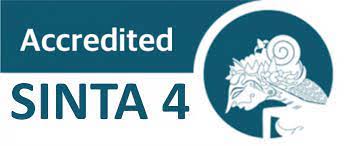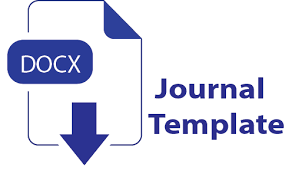Digital literacy of an EFL teacher in IT-based language instruction to teach speaking
DOI:
https://doi.org/10.53873/culture.v12i1.690Keywords:
Digital Literacy, IT-Based Instruction, Teaching Applications, Teaching Speaking, WebsiteAbstract
Learners in today's modern age are highly technologically savvy. It is no surprise that some forms of IT-based instruction are used in language courses to make classes more entertaining and participatory for students. Teachers can involve their students in the learning process by providing a vibrant and engaging classroom environment using technology. This research aims to investigate the level of digital fluency of an Indonesian EFL teacher who uses IT-based language instruction to teach speaking, as well as how the Indonesian EFL teacher integrates digital tools and technology in their language instruction to teach speaking skills. These goals are achieved by observing an EFL teacher and 37 EFL students during three sessions of the teaching and learning process using a qualitative methodology. The results show that IT-based instruction is delivered through a variety of applications and websites, demonstrating the high level of digital literacy of the EFL teacher. It also reveals that the learning process is now inextricably linked to the internet as a learning resource and instrument, and that technological advancements benefit both students and teachers. Therefore, it is challenging to separate the roles of teachers and technology in constructing the current educational paradigm due to their influence on its progress.References
Anderson, S. E., & Kyzar, K. B. (2022). Between School and Home: TPACK-in-Practice in Elementary Special Education Contexts. Computers in the Schools, 39(4), 323–341. https://doi.org/10.1080/07380569.2022.2086738
Asratie, M. G., Wale, B. D., & Aylet, Y. T. (2023). Effects of using educational technology tools to enhance EFL students’ speaking performance. Education and Information Technologies. https://doi.org/10.1007/s10639-022-11562-y
Carter, S., Andersen, C., Turner, M., & Gaunt, L. (2023). “What about us?” Wellbeing of higher education librarians. Journal of Academic Librarianship, 49, 102619. https://doi.org/10.1016/j.acalib.2022.102619
Çetin, E. (2021). Digital storytelling in teacher education and its effect on the digital literacy of pre-service teachers. Thinking Skills and Creativity, 39, 100760. https://doi.org/10.1016/j.tsc.2020.100760
Chiu, T. K. F., Moorhouse, B. L., Chai, C. S., & Ismailov, M. (2023). Teacher support and student motivation to learn with Artificial Intelligence (AI) based chatbot. Interactive Learning Environments, 1–17. https://doi.org/10.1080/10494820.2023.2172044
Creswell, J. W., & Creswell, J. D. (2018). Research design: Qualitative, quantitative and mixed methods approaches. SAGE Publication.
Daumiller, M., Fasching, M., Dickhäuser, O., & Dresel, M. (2022). Teachers’ achievement goals and teaching practices: A lesson diary approach. Teaching and Teacher Education, 127, 104079. https://doi.org/10.1016/j.tate.2023.104079
Dinçer, S. (2024). Bridging the gap in technology integration in education: An examination of science teachers’ competencies and needs. Journal of Turkish Science Education, 21(4), 620–634. https://doi.org/10.36681/tused.2024.033
Goh, C. C. M., & Burns, A. (2012). Teaching Speaking: A Holistic Approach. Cambridge University Press.
Habibi, A., Razak, R. A., Yusop, F. D., & Mukminin, A. (2019). Preparing future EFL teachers for effective technology integration: What do teacher educators say? Asian EFL Journal, 21(2), 9–30.
Hamsiah, A., Angreani, A. V., Zubair, A. G. H., Rahmadhanningsih, S., Swandi, A., Rahim, A., & Rizal, A. (2024). Transforming education in coastal Indonesia: A survey of digital literacy and competence among educators. International Journal of Religion, 5(11), 4947–4955. https://doi.org/10.61707/59p9jn39
Han, Y., & Reinhardt, J. (2022). Autonomy in the digital wilds: Agency, competence, and self-efficacy in the development of L2 digital identities. TESOL Quarterly, 56(3), 985–1015. https://doi.org/10.1002/tesq.3142
Ho, Y. Y. C. (2020). Communicative language teaching and English as a foreign language undergraduates’ communicative competence in Tourism English. Journal of Hospitality, Leisure, Sport and Tourism Education, 27(1), 100271. https://doi.org/10.1016/j.jhlste.2020.100271
Jameer MD, M. R. (2024). Augmenting EFL/ESL education: The outcome of technology on contemporary language learning. Educational Administration: Theory and Practice, 2196–2202. https://doi.org/10.53555/kuey.v30i5.3260
Kiryakova, G., & Kozhuharova, D. (2024). The digital competences necessary for the successful pedagogical practice of teachers in the digital age. Education Sciences, 14(5), 507. https://doi.org/10.3390/educsci14050507
Kurniadi, D., Yuliasri, I., Wahyuni, S., & Sakhiyya, Z. (2025). Contriving IT-Based Integrated Skills Approach (ITBISA) for Students’ English Proficiency and Digital Literacy Skills. Qubahan Academic Journal, 5(1), 782–797. https://doi.org/10.48161/qaj.v5n1a1595
Li, J. T., Arizmendi, G. D., & Swanson, H. L. (2022). The role of language comprehension skills and instructional practices in cross-language influence of Spanish-speaking dual language learners’ calculation skills. Early Childhood Research Quarterly, 61, 90–105. https://doi.org/10.1016/j.ecresq.2022.05.004
Liu, T., Zhang, Z., & Gao, X. (Andy). (2023). Pedagogical design in technology-enhanced language education research: A scoping review. Sustainability, 15(7), 6069. https://doi.org/10.3390/su15076069
Meirovitz, T., Russak, S., & Zur, A. (2022). English as a foreign language teachers’ perceptions regarding their pedagogical-technological knowledge and its implementation in distance learning during COVID-19. Heliyon, 8(4), e09175. https://doi.org/10.1016/j.heliyon.2022.e09175
Moorhouse, B. L., & Yan, L. (2023). Use of digital tools by English language schoolteachers. Education Sciences, 13(3), 226. https://doi.org/10.3390/educsci13030226
Muslimin, A. I., Mukminatien, N., & Ivone, F. M. (2023). TPACK-SAMR digital literacy competence, technostress, and teaching performance: Correlational study among EFL lecturers. Contemporary Educational Technology, 15(2), ep409. https://doi.org/10.30935/cedtech/12921
Saubern, R., Urbach, D., Koehler, M., & Phillips, M. (2020). Describing increasing proficiency in teachers’ knowledge of the effective use of digital technology. Computers and Education, 147, 103784. https://doi.org/10.1016/j.compedu.2019.103784
Smaldino, S. E., Lowther, D. L., & Mims, C. (2019). Instructional Technology and Media for Learning. Pearson Education.
Soegoto, E. S., Albar, C. N., Luckyardi, S., Abduh, A., Asnur, M. N. A., & Haristiani, N. (2025). It and management strategies for language education: Lessons from the digitalization of education activities. International Journal of Language Education, 8(4). https://doi.org/10.26858/ijole.v8i4.70019
Stenalt, M. H. (2021). Digital student agency: Approaching agency in digital contexts from a critical perspective. Frontline Learning Research, 9(3), 52–68. https://doi.org/10.14786/flr.v9i3.697
Tsang, A., & Lee, J. S. (2023). The making of proficient young FL speakers: The role of emotions, speaking motivation, and spoken input beyond the classroom. System, 115, 103047. https://doi.org/10.1016/j.system.2023.103047
Waluyo, B. (2024). Technology-fused English teaching and learning in higher education: From individual differences to being different individuals. LEARN Journal: Language Education and Acquisition Research Network, 17(2), 42–47. https://doi.org/10.70730/XSFP6133
Whitehead, G. E. K., & Ryu, Y. M. (2023). “I am not a native speaker …”: Exploring the perceived pronunciation teaching difficulties faced by Korean public elementary school English teachers. System, 115, 103056. https://doi.org/10.1016/j.system.2023.103056
Williyan, A. (2023). Integrating Ted Talks into EFL learners’ classroom: Lesson from Indonesian EFL teachers. UNNES-TEFLIN National Conference, 5, 13–24. https://proceeding.unnes.ac.id/utnc/article/view/2593
Williyan, A., & Sirniawati, . (2020). Ict in distance learning: Teachers’ attitudes and problems. ELT Echo: The Journal of English Language Teaching in Foreign Language Context, 5(2), 119. https://doi.org/10.24235/eltecho.v5i2.6949
Witzel, B., Görgen-Rein, R., Galuschka, K., Huemer, S., Corvacho del Toro, I., Schulte-Körne, G., & Moll, K. (2024). Digital game-based spelling intervention for children with spelling deficits: A randomized controlled trial. Learning and Instruction, 89, 101842. https://doi.org/10.1016/j.learninstruc.2023.101842
Xing, F., & Turner, J. E. (2020). Revisiting Chinese resistance to communicative English: A counter example. International Journal of Educational Research, 103, 101631. https://doi.org/10.1016/j.ijer.2020.101631
Yang, S. J. (2020). Affordances and Challenges of Telecollaboration for Pre-service Teachers. Language Learning and Technology, 24(3), 30–41.
Zou, D., Xie, H., & Wang, F. L. (2023). Effects of technology enhanced peer, teacher and self-feedback on students’ collaborative writing, critical thinking tendency and engagement in learning. Journal of Computing in Higher Education, 35(1), 166–185. https://doi.org/10.1007/s12528-022-09337-y
Downloads
Additional Files
Published
Issue
Section
License
Copyright (c) 2025 Aldha Williyan, Muhammad Aulia Taufiqi, Didit Kurniadi

This work is licensed under a Creative Commons Attribution 4.0 International License.













